2022 Mercedes-Benz EQB electric SUV reminds us boxy is brilliant
How refreshingly normal. This is good. Very good.
That sums my first notes when driving the Mercedes-Benz EQB this past week, out from a Black Forest hotel with a mean umlaut, jetlagged, into the kind of muggy, scorching day—read 99 degrees—that puts one’s tolerance for hot air on high alert.
Here, I wasn’t navigating around ridiculous door handles and releases, frameless doors, wheel slats, camera “mirrors,” or kammback designs—or contending with gesture controls, limited head room, fake sci-fi motor sounds, directional lighting cues, or fingerprint sensors.
OK, maybe there is a 64-color ambient lighting system, but in daylight I could look past that.
Over a series of highway and country-road driving loops with the EQB 300 and EQB 350, making no effort to drive efficiently, I then saw an indicated efficiency across them of nearly 3.0 miles per kwh.
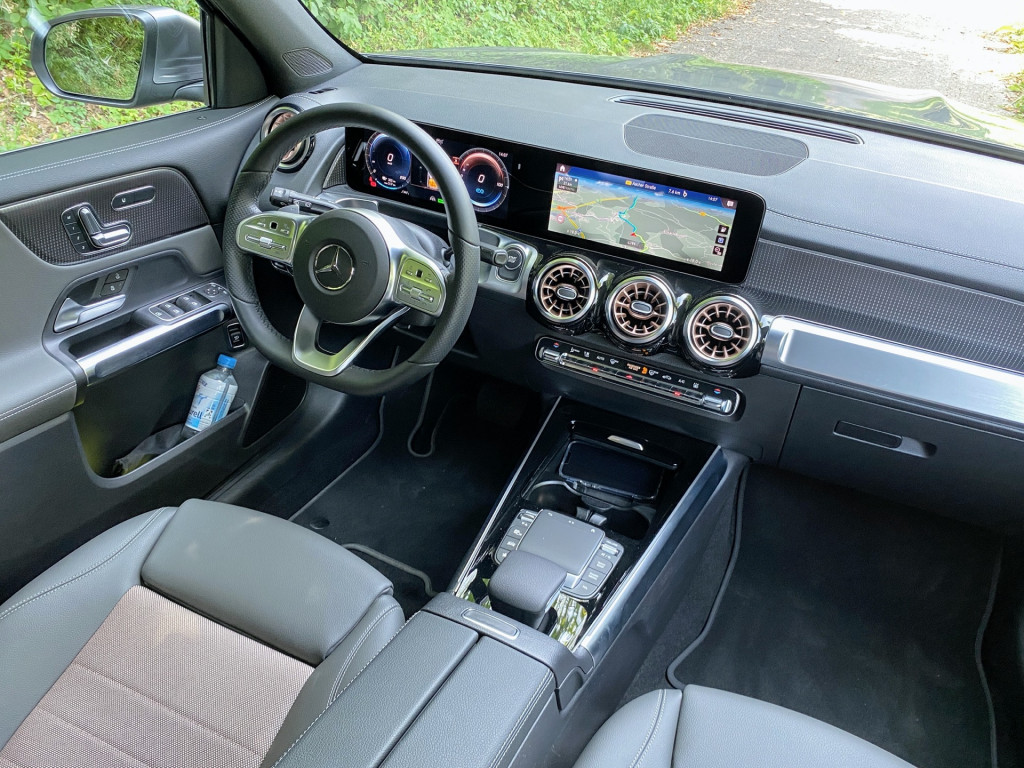
2022 Mercedes-Benz EQB
That’s not wildly great, but it’s good for boxy—especially in a vehicle that has seating for up to seven. With the EQB’s 70.5-kwh liquid-cooled battery pack, that assures a real-world range of more than 200 miles, even in enthusiastic driving with the air conditioning cranked. I anticipate significantly more than this in the EQB’s EPA range ratings, which haven’t yet been released.
Smoothing out the ICE box
There are multiple levels of irony here. One of them, of course, is that the GLB is a new iteration of a model that previously was outfitted for electric by Tesla. Another is that this flash of brilliance in normality is essentially a gasoline SUV—the GLB—reskinned at the front and rear, flattened at the floor of its body structure to erase the ICE remnants, and with lots of attention paid to smooth underbody aerodynamics.
It all pays off. The EQB achieves a 0.28 coefficient of drag (versus the gasoline version’s 0.30)—without any of the painfully geeky pieces I listed off above.
I mean it. Owners are just starting to discover that their hatchback “coupe” crossovers maybe aren’t all that for space and utility, and that the tapered rooflines can nix some of the reasons they wanted a crossover in the first place, like the easy time getting in and out. At about 184 inches long, this one’s about the same footprint as the Tesla Model Y, Ford Mustang Mach-E, Volkswagen ID.4, or Kia EV6, but it feels bigger inside in ways that actually matter—or at least matter to taller people.
Feels bigger on the inside
The EQB’s roofline doesn’t have any such long taper at the rear. You could fit a piece of furniture in the back without shattering the tailgate glass. There’s loads of head room in the front and rear seats, decent leg room and support, too. I can sit behind my 6-foot-6 self with several inches above my head, even though Mercedes did raise the H-point a fraction of an inch in the shift to electric—and in all fairness they didn’t have any versions with the panoramic sunroof upscale U.S. Pinnacle versions will get.
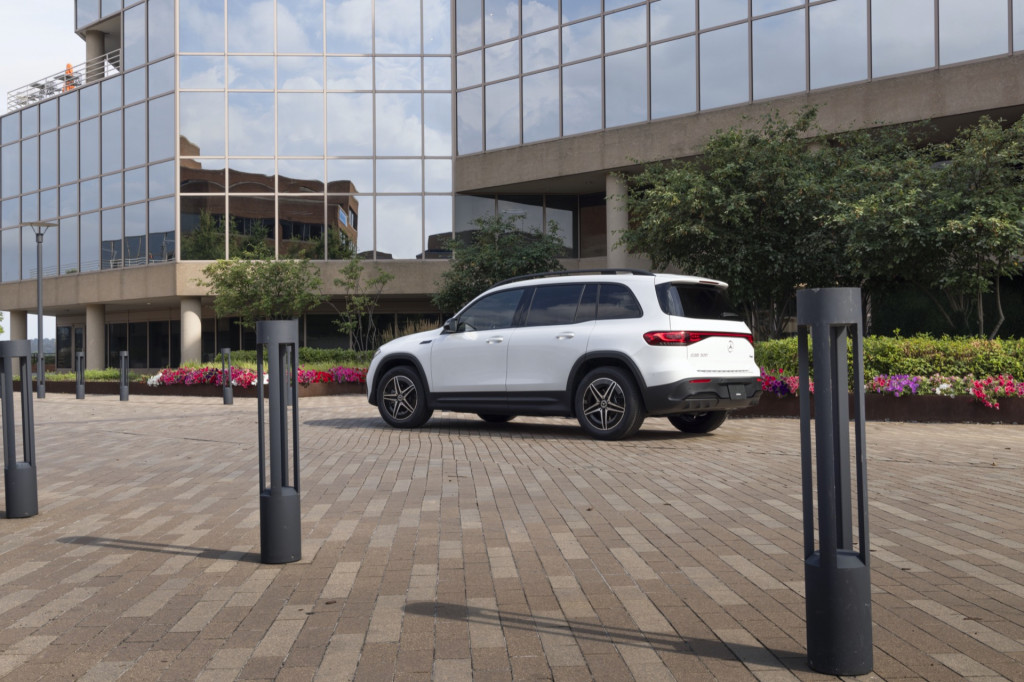
2022 Mercedes-Benz EQB 300
The closest EV to this I can think of is the Kia Soul EV—a car Kia perplexingly decided to discontinue for the U.S. in its even-better present form. But the EQB is a size larger and more in the sweet spot for Americans. Despite the rather utilitarian shape and the optional seven seats (good for up to four child seats, Mercedes says), it’s also luxurious beyond just bearing the three-pointed star on the front.
What makes it more luxurious than most alternatives comes down to a whole lot of things. Beyond the excellent seats, high-quality finishes, and solid feel to everything, the EQB is just very quiet inside. Mercedes-Benz added more insulation to tamp out road noise, a special isolating mount for the front motor, and rubber bushings to quell harshness through the rear subframe.
Rear wheels first—yes, even though it’s a front-drive platform
There are two flavors of the EQB, and it essentially comes down to power. The EQB 300 4Matic makes a combined 225 hp and 288 lb-ft of torque, while the EQB 350 4Matic steps it up to 288 hp and 384 lb-ft of torque. Those are combined figures, but the EQB in either guise splits its delivery between a permanent-magnet motor in back and a lesser asynchronous motor in front, allowing the front motor to spin drag-free to cut power use in a range of situations. The two versions use the same hardware, and while differences between the two versions primarily comes down to software, consider that the EQB is not fully aboard the over-the-air updates express.
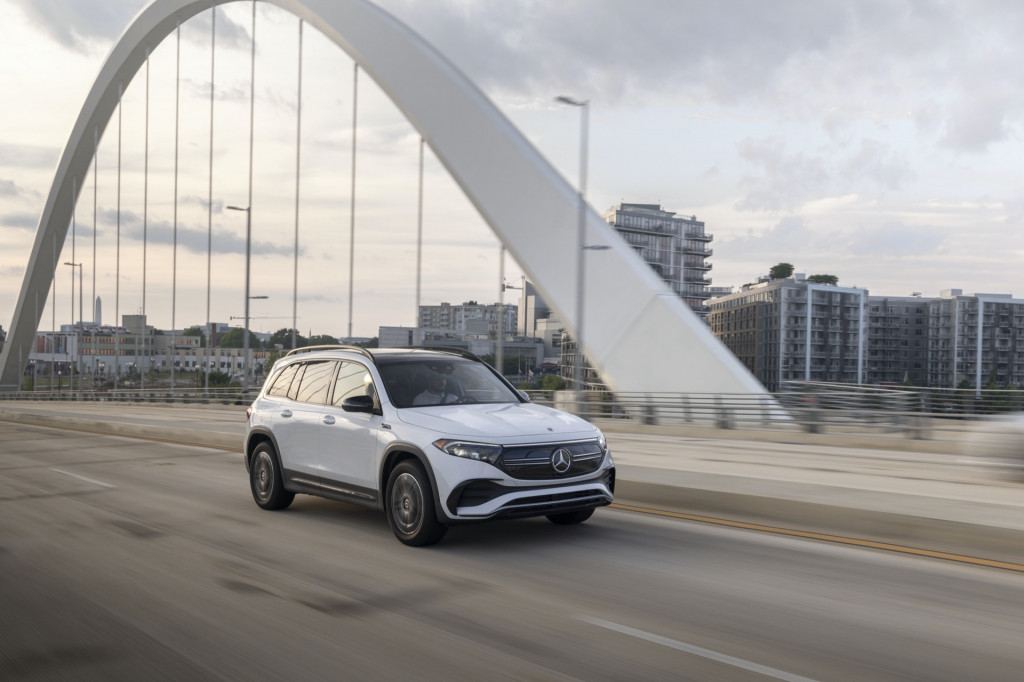
2022 Mercedes-Benz EQB 300
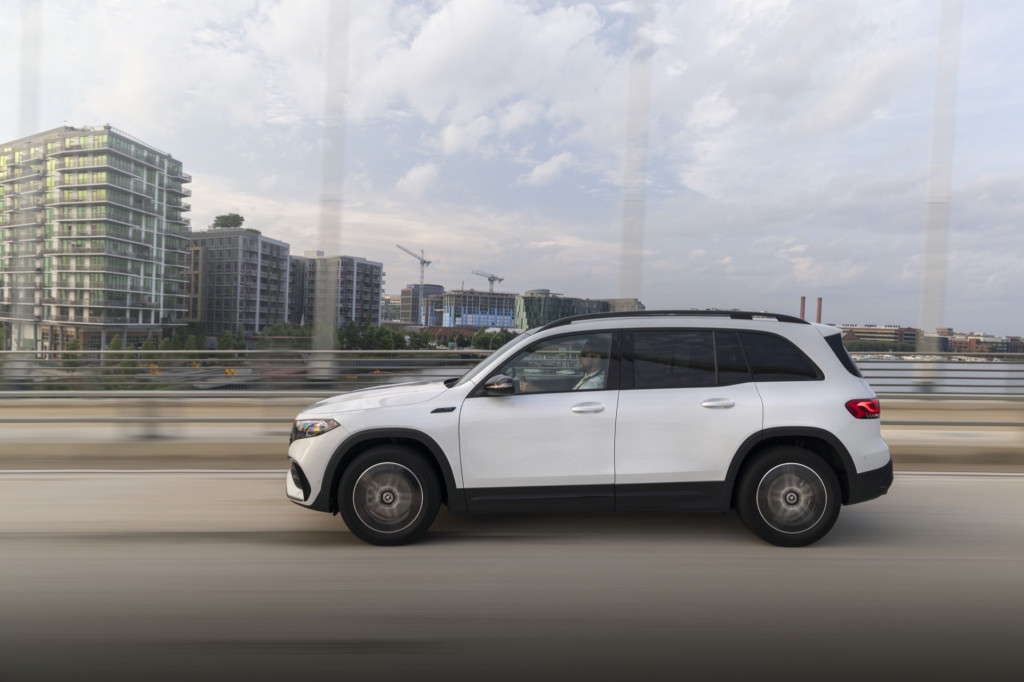
2022 Mercedes-Benz EQB 300
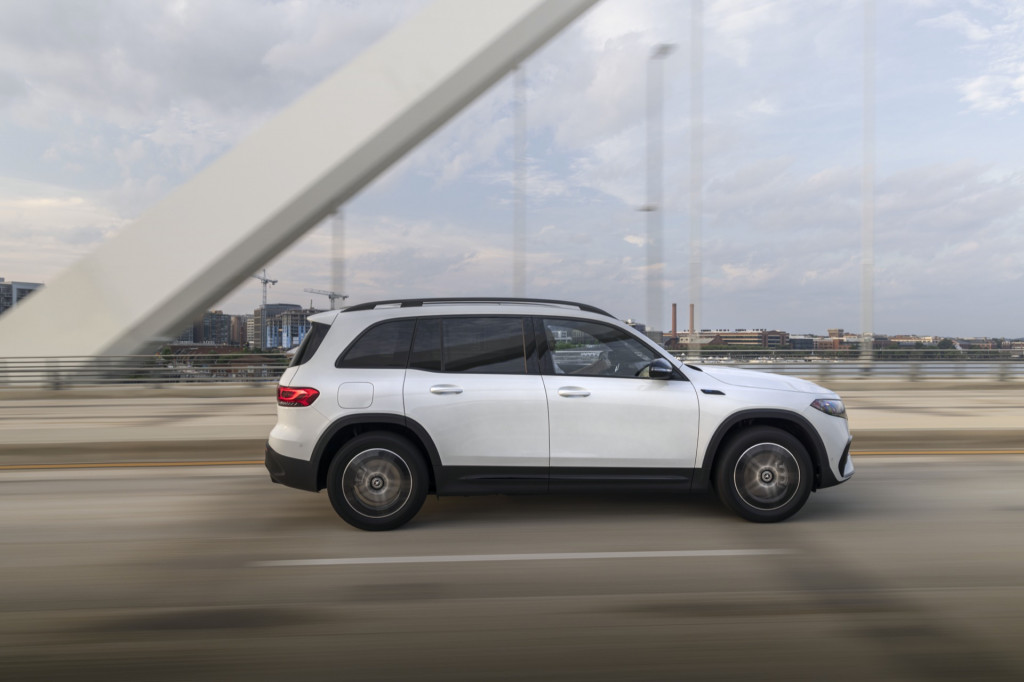
2022 Mercedes-Benz EQB 300
Mercedes has given preliminary 0-60 mph acceleration figures of 8.0 seconds for the EQB 300 and 6.2 seconds for the EQB 350. The difference did feel about that pronounced, but it’s not extra power you’re going to be using for much more than freeway passes. The additional punch of the 350 doesn’t make it any more confident in corners because it didn’t feel as if the suspension keeps body motion any more under wraps—one of the reasons I think the 300 is probably the way to go here.
The EQB simply isn’t tuned for hairpin turns or quick esses, and that’s totally fine. It weighs about 4,800 lb, or roughly 1,000 lb more than a gasoline GLB. With struts in front, a four-link setup in back, its center of mass down low, and a steering rack that’s about as well-weighted as they come, the EQB isn’t averse to backroads; it just makes clear with nice predictable body lean that it isn’t designed around them.
Asterisk to that: European versions of the EQB have the option of adaptive dampers. That’s not an option we’ll see in the U.S., so we’ll update on how those versions compare as soon as we can.
For Mercedes, a straightforward interface
Although the EQB’s interface is far simpler—and to me, less migraine-inducing—than that of the flagship EQS with the Hyperscreen, the EQB’s driving modes very closely parallel those used in the EQS. That means Individual, Sport, Comfort, and Eco modes, all dialing in different settings for the steering, accelerator behavior and, if equipped, dampers. The EQS blends the friction pads in with regenerative braking when you step on the brake pedal and near a stop, and it has a much more reassuring pedal feel than the EQS.
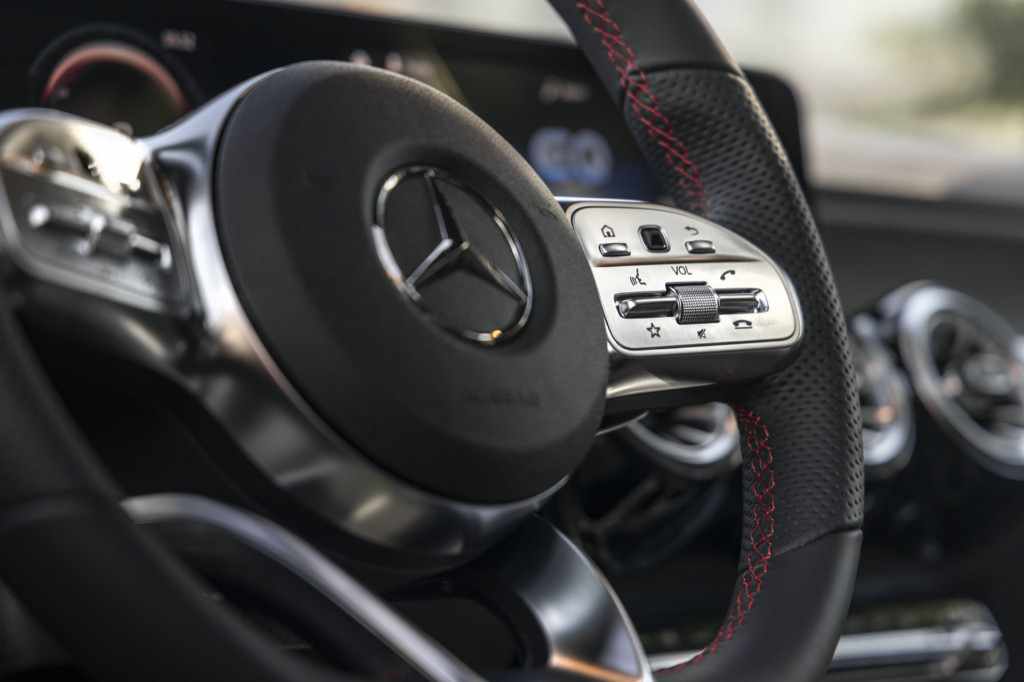
2022 Mercedes-Benz EQB 300
Just as in the EQS, the default is a weak recuperation (D), while you can click the left steering-wheel paddle to access D- (stronger recuperation) or the right to get over to D+ (essentially coasting). D- isn’t quite one-pedal driving, but it will bring the vehicle very gradually to a stop and hold it.
My favorite setting was D Auto, though—one more click to the right. It takes advantage of the EQB’s front sensors, adding to regen, for instance, to keep the distance behind a car in front, or tapping into speed-sign info to bring you back down to legal speeds faster if you’ve lifted off the accelerator anyway. Seems like it would cut fatigue on a long trip.
Mercedes emphasizes that it wasn’t going for peak fast-charging rates with the EQB, so it should be respectable on road trips on widely available 150-kw CCS charge connectors. It can charge at up to 100 kw, but as was emphasized, it can maintain a high portion of that for most of its charge curve—although Mercedes says that any preconditioning of the battery remains linked to the navigation system, with no manual override. If the system gets you ready, it allows a 10%-80% charge in 31 minutes, or maybe about 80 miles (to adapt and approximate a Euro-WLTP spec to EPA) in 15 minutes. Level 2 charging is as quick as you can make it with an 11-kw onboard charger, although Mercedes says that on a 32-amp wallbox you should count on 11.3 hours from 10% to 100%.
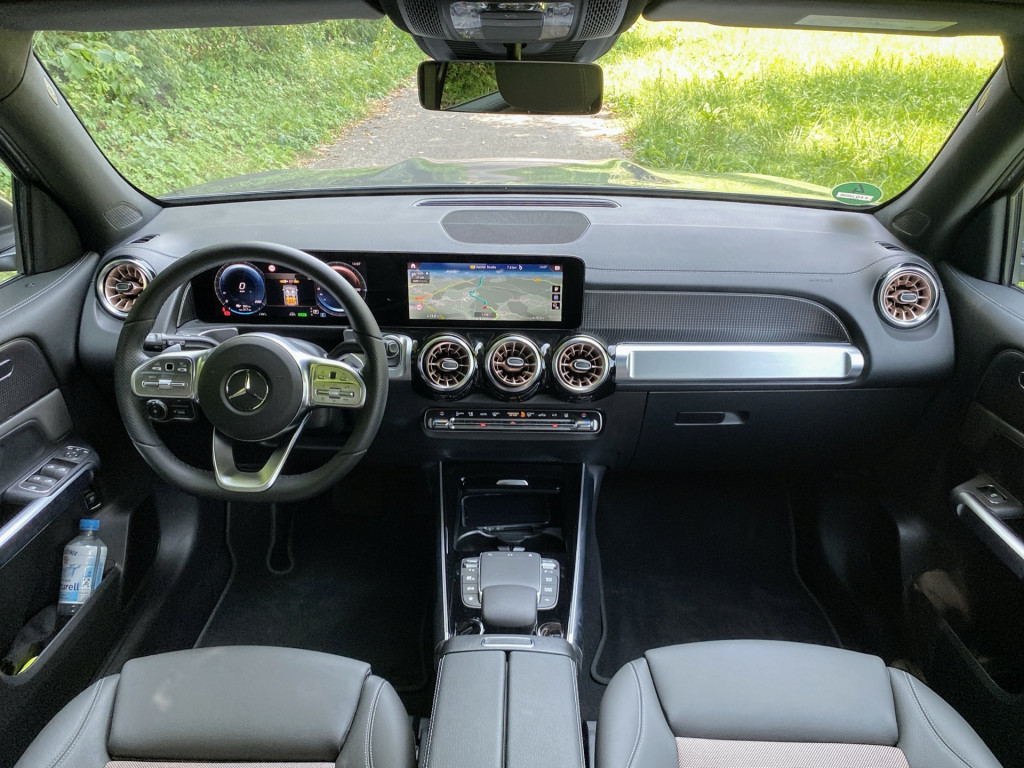
2022 Mercedes-Benz EQB
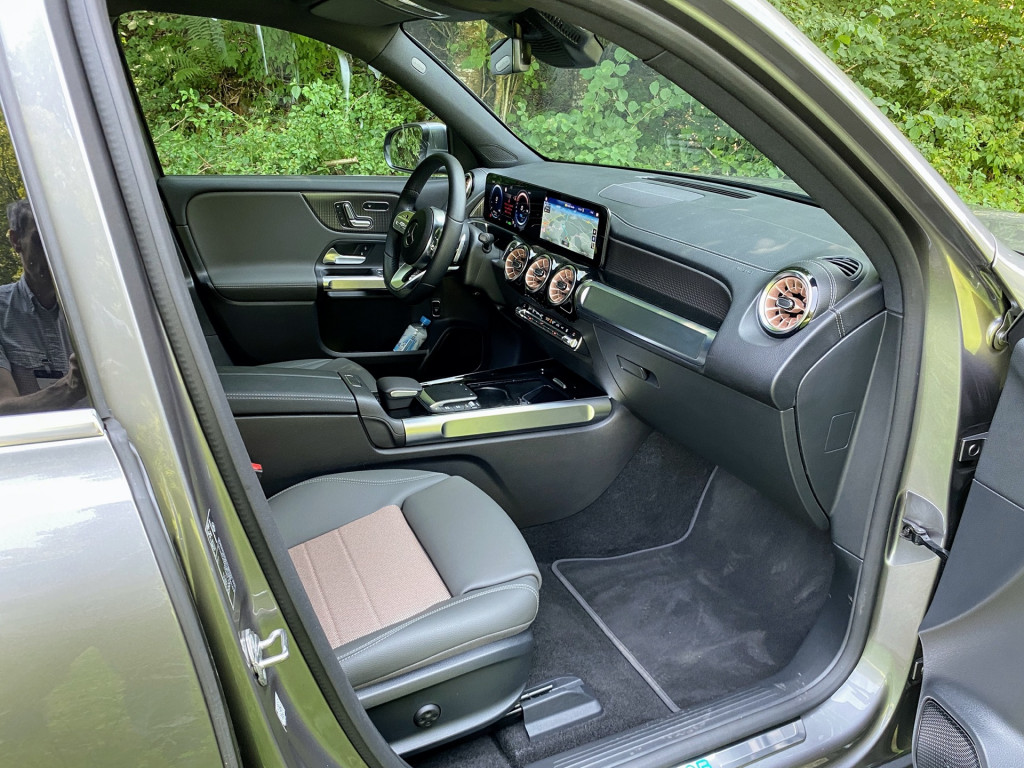
2022 Mercedes-Benz EQB
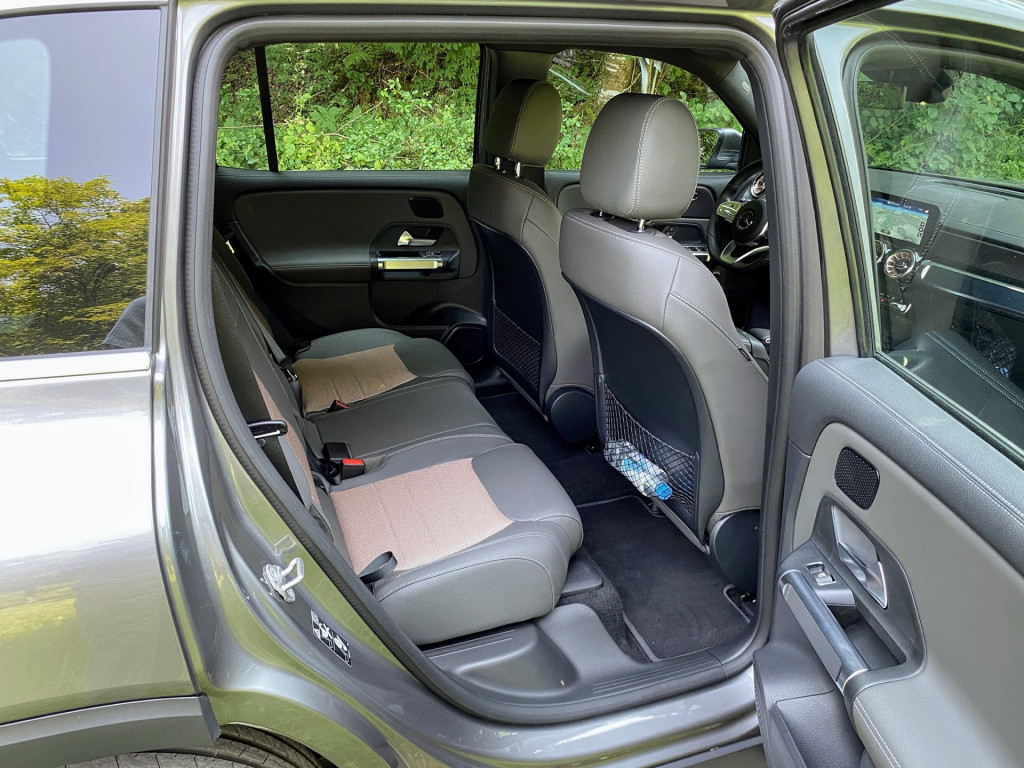
2022 Mercedes-Benz EQB
As for range, EPA ratings still aren’t out, but with first deliveries of this model due in mid-August, any day now. It’s likely that all versions of the EQB will significantly exceed 200 miles, but we’re not sure by how much. And since differences between the two versions are mainly software-based, we expect to see very minor differences between the two, run in the same cycle and at the same loads. All versions get a heat pump, which should help make real-world numbers closer to the ratings.
B makes more sense than C
The EQB, frankly, drives a lot like the EQC, the model that Mercedes at the last minute decided not to offer in the U.S. That’s a good thing—probably, both of those things, now that we know the EQE SUV is in the pipeline—let’s just hope the EQB delivers a little more range than the EQC would have.
At a starting price of $55,750 for the EQB 300—$48,250 if you shop by the potential of the $7,500 EV tax credit, or nearly $19,000 less than a Model Y Long Range today, if you’re OK with less range—the EQB is looking like a better deal now that I’ve driven it. And I’d say, the simpler the better is the way this model makes sense. The EQB 350 starts just $3,550 higher, but dynamically, it’s happy as a luxury vehicle, and the 300’s power fits the mission.
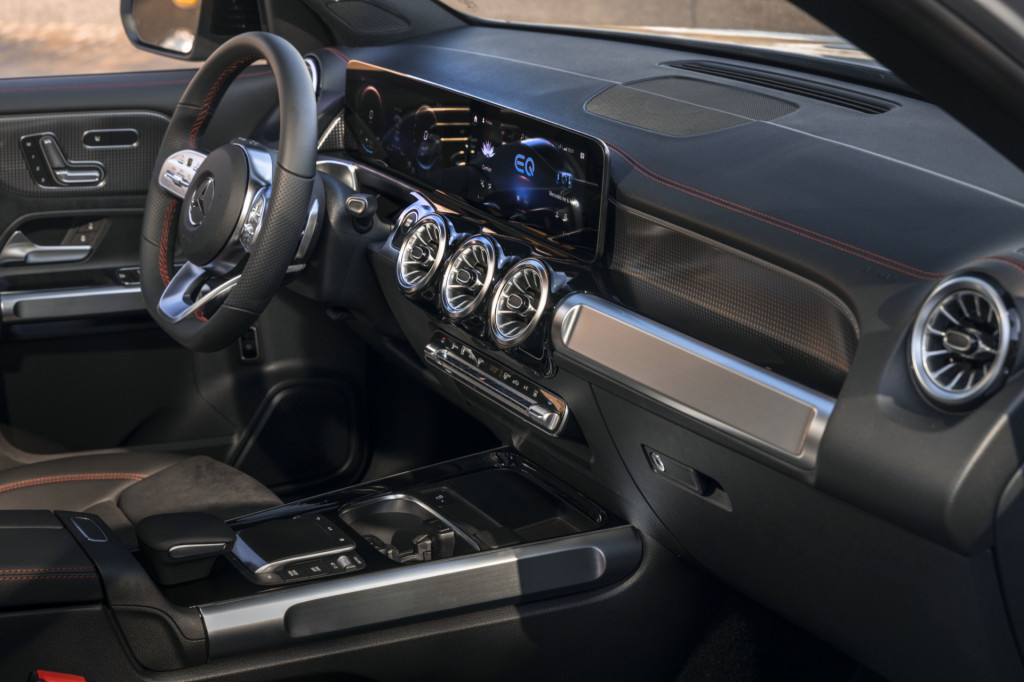
2022 Mercedes-Benz EQB 300
There’s no Hyperscreen here. All versions of the EQB come with a setup incorporating dual 10.3-inch screens—with the right one near the middle of the dash and a touchscreen. The latest MBUX system is more complex than we’d like, but with multiple levels of redundancy to get what you need done—including natural language commands that sometimes work—you’ll find a preferred way. It includes wireless device charging and wireless Apple CarPlay and Android Auto.
The EQB does leave room for quite a few options, including a $2,000 Technology Package (head-up display, augmented navigation, traffic-sign assist), an $3,250 AMG Night appearance package (Nappa leather with red topstitching, sport seats, sport pedals, AMG 18-inch wheels, and more), and a $1,300 Driver Assistance Package that brings adaptive cruise control plus active-safety upgrades. Front multicontour seats (massage and cooling) and a winter package (heated windshield and heated washer system) are also on deck. The Pinnacle version itself adds Burmester surround sound, a panoramic roof, and a surround-view camera system and adds $2,550 to the price of the EQB 300.
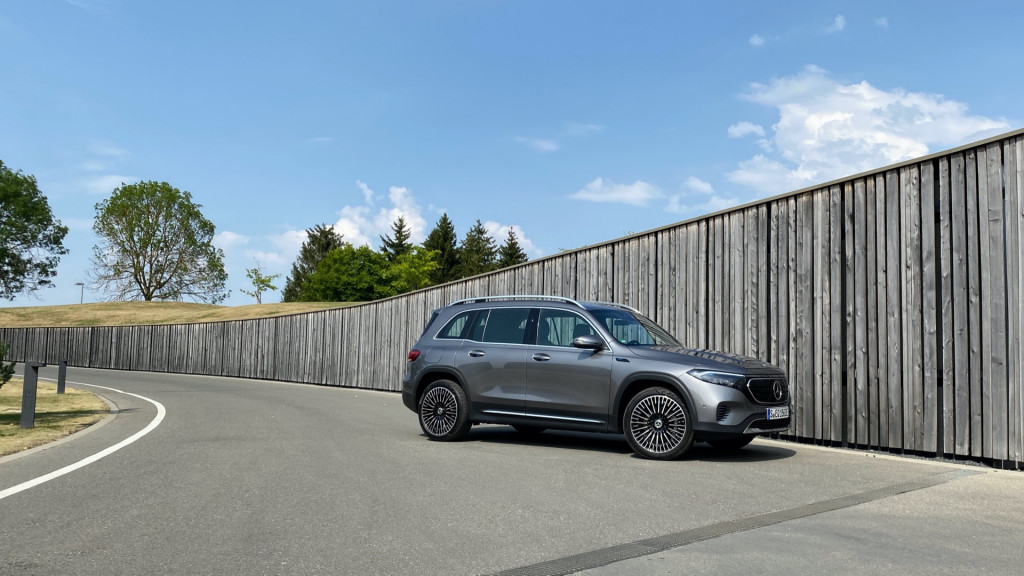
2022 Mercedes-Benz EQB
Sometimes a change in purpose, rather than a complete reinvention, results in a better product. I may have said flippantly at one time that the GLB was born to be this way—electric, that is—but when it’s this good, the kammbacks can wait.
–
Mercedes-Benz provided transportation and accommodation so that we could bring you this test drive review.
Electric cars news.




